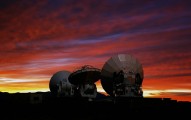
North Korea has announced that it has tested a hydrogen bomb for the first time. It has run nuclear tests in the past — but the international reaction has been much more panicked this time than before.
Both atomic bombs and hydrogen bombs are kinds of nuclear bombs, meaning that the energy comes from nuclear reactions. But the way that they actually release that huge amount of energy is different — and leads to massive differences in the power that is unleashed when they are set off.
The big difference is that atomic bombs use nuclear fission, which splits a bigger atom into two smaller ones, to create their energy. Hydrogen bombs use fusion, which is done by fusing two or more atoms into a bigger one.
Hydrogen bombs have a fission weapon inside too, which is used to trigger the energy release from the fusion part of the bomb. That is needed because fusion weapons need to be triggered by a huge amount of energy — which can only be unleashed by an atomic bomb.
They get their name from the hydrogen that is used in the fusion.
Because of the way that they are made, hydrogen bombs are usually much more powerful than their atomic counterparts.
That is why people are so worried about North Korea’s announcement — it has already launched atomic bombs, but this is the first time that it has tested a hydrogen one.
North Korea did its first known nuclear test in 2006, and has done two more since.
The massive power of a hydrogen bomb is also one of the reasons that some analysts are sceptical of the concerns. Detonating such a weapon underground should be enough to cause a huge quake — but the impact was on a scale that could have been generated by an atomic bomb, and may have been less powerful than the one dropped in Hiroshima.
But North Korea said that the bomb was “miniaturised”, which could mean that it was downsized to make it have about the power of an atomic bomb.
via : The Independent – Science


